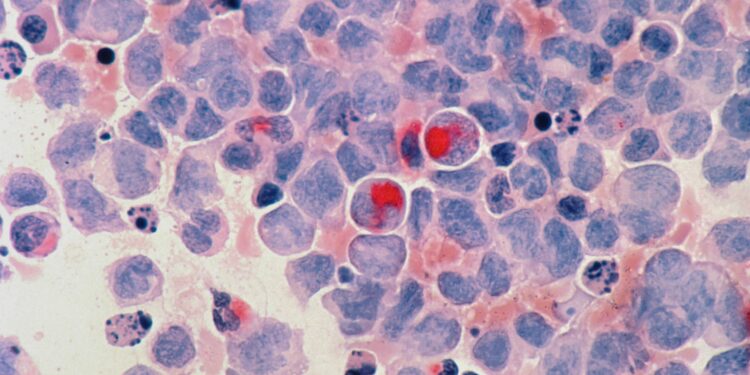Credits: Unsplash/CC0 Public domain
Melbourne researchers have achieved a world first by creating blood stem cells that closely resemble those in the human body. The discovery could soon lead to personalised treatments for children with leukaemia and bone marrow disorders.
The research, conducted by the Murdoch Children’s Research Institute (MCRI) and published in Biotechnology of naturehas overcome a major hurdle in producing human blood stem cells, which can create red blood cells, white blood cells and platelets that closely match those in the human embryo.
MCRI Associate Professor Elizabeth Ng said the team had made an important discovery in the development of human blood stem cells, paving the way for the use of these lab-grown cells in blood stem cell and bone marrow transplants.
“The ability to take any cell from a patient, reprogram it into a stem cell, and then turn it into blood cells specifically suited for transplantation will have a huge impact on the lives of these vulnerable patients,” she said.
“Prior to this study, it was not possible to develop human blood stem cells in the laboratory that could be transplanted into an animal model of bone marrow failure to produce healthy blood cells. We developed a workflow that created transplantable blood stem cells that closely mirror those in the human embryo.
“Importantly, these human cells can be created at the scale and purity required for clinical use.”
In the study, immunodeficient mice were injected with human blood stem cells created in the lab. The researchers found that the blood stem cells became functional bone marrow at levels similar to those seen in umbilical cord blood cell transplants, a proven measure of success.
The researchers also found that stem cells grown in the lab could be frozen before being successfully transplanted into mice. This method mimics the process of preserving stem cells from donor blood before transplanting them into patients.
MCRI’s Professor Ed Stanley said the findings could lead to new treatment options for a range of blood disorders.
“Red blood cells are essential for transporting oxygen and white blood cells are our immune defense, while platelets cause clotting to stop bleeding,” he said. Understanding how these cells develop and function is like unraveling a complex puzzle.
“By perfecting stem cell methods that mimic the development of normal blood stem cells found in our bodies, we can understand and develop personalized treatments for a range of blood diseases, including leukemias and bone marrow failure.”
MCRI’s Professor Andrew Elefanty said that while a blood stem cell transplant was often a key part of life-saving treatment for childhood blood disorders, not all children found a perfectly matched donor.
“Incompatible donor immune cells from the transplant can attack the recipient’s own tissues, leading to serious illness or death,” he said.
“Developing personalized, patient-specific blood stem cells will help prevent these complications, address the donor shortage and, alongside genome editing, help correct the underlying causes of blood diseases.”
Professor Elefanty said the next step, probably in about five years, would be to conduct a phase I clinical trial to test the safety of using these lab-grown blood cells in humans.
Professor Elefanty, Professor Stanley and Associate Professor Ng are also Principal Investigators at the Melbourne node of the Novo Nordisk Foundation Centre for Stem Cell Medicine (reNEW).
Researchers from the University of Melbourne, Peter MacCallum Cancer Center, University of California, Los Angeles, University College London and the University of Birmingham also contributed to the findings.
More information:
Long-term transplantation of differentiated multilineage hematopoietic cells from human induced pluripotent stem cells, Biotechnology of nature (2024). DOI: 10.1038/s41587-024-02360-7
Provided by Murdoch Children’s Research Institute
Quote: Blood stem cell research could transform bone marrow transplants (2024, September 2) retrieved September 2, 2024 from
This document is subject to copyright. Apart from any fair dealing for the purpose of private study or research, no part may be reproduced without written permission. The content is provided for informational purposes only.



